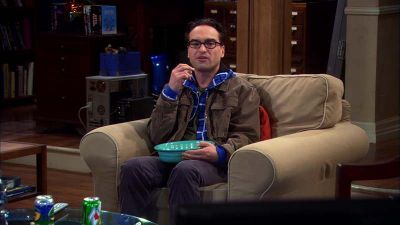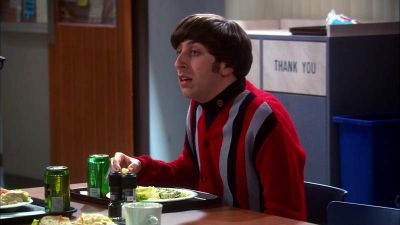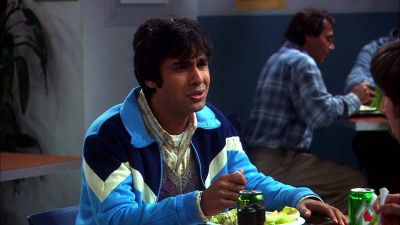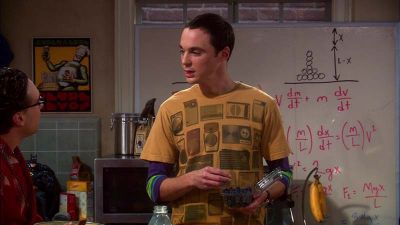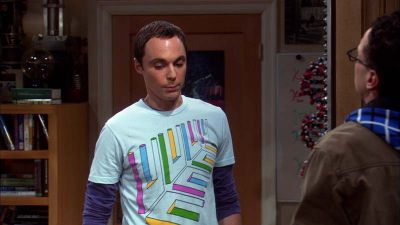Difference between revisions of "Building Narrative (Discussion)"
From Screenpedia
Jump to navigationJump to search (put Sheldon pix in gallery) |
|||
| Line 20: | Line 20: | ||
===Two more screen shots of Sheldon=== | ===Two more screen shots of Sheldon=== | ||
| − | + | <gallery widths=400px heights=300px perrow=2 > | |
| − | + | Image:BigBangTheory20081117qq00 03 59qq00055.jpg| | |
| + | Image:BigBangTheory20081117qq00 01 28qq00020.jpg| | ||
| + | </gallery> | ||
==Signs of performance<ref name="Dyer" />== | ==Signs of performance<ref name="Dyer" />== | ||
Revision as of 14:39, 30 August 2016
Signs of character[1]
- Viewer foreknowledge
- Character name
- Appearance
- Objective correlative
- Dialogue
- Lighting and videography or cinematography
- Action
How are these signs of character used to construct the characters in the "The Vartabedian Conundrum" episode of The Big Bang Theory? These screen shots mostly show their first appearance in this particular episode.
Two more screen shots of Sheldon
Signs of performance[1]
- Vocal
- Facial
- Gestural
- Corporeal
Star texts
- Explain how these terms apply to the study of television stars:
- Group 4: Stars as texts
- Group 1: Intertextual
- Group 2: Media text
- Group 3: Polysemy
- How does the textbook distinguish a "star" from an everyday "actor"?
- Choose one star principally known for his or her work on television. What are some attributes of his or her polysemy. Explain how, according to Richard Dyer's approach, his or her polysemy is constructed from:
- Promotion
- Publicity
- Characters on TV programs
Bibliography
- Jeremy G. Butler, Television: Critical Methods and Applications (New York: Routledge, 2012).
